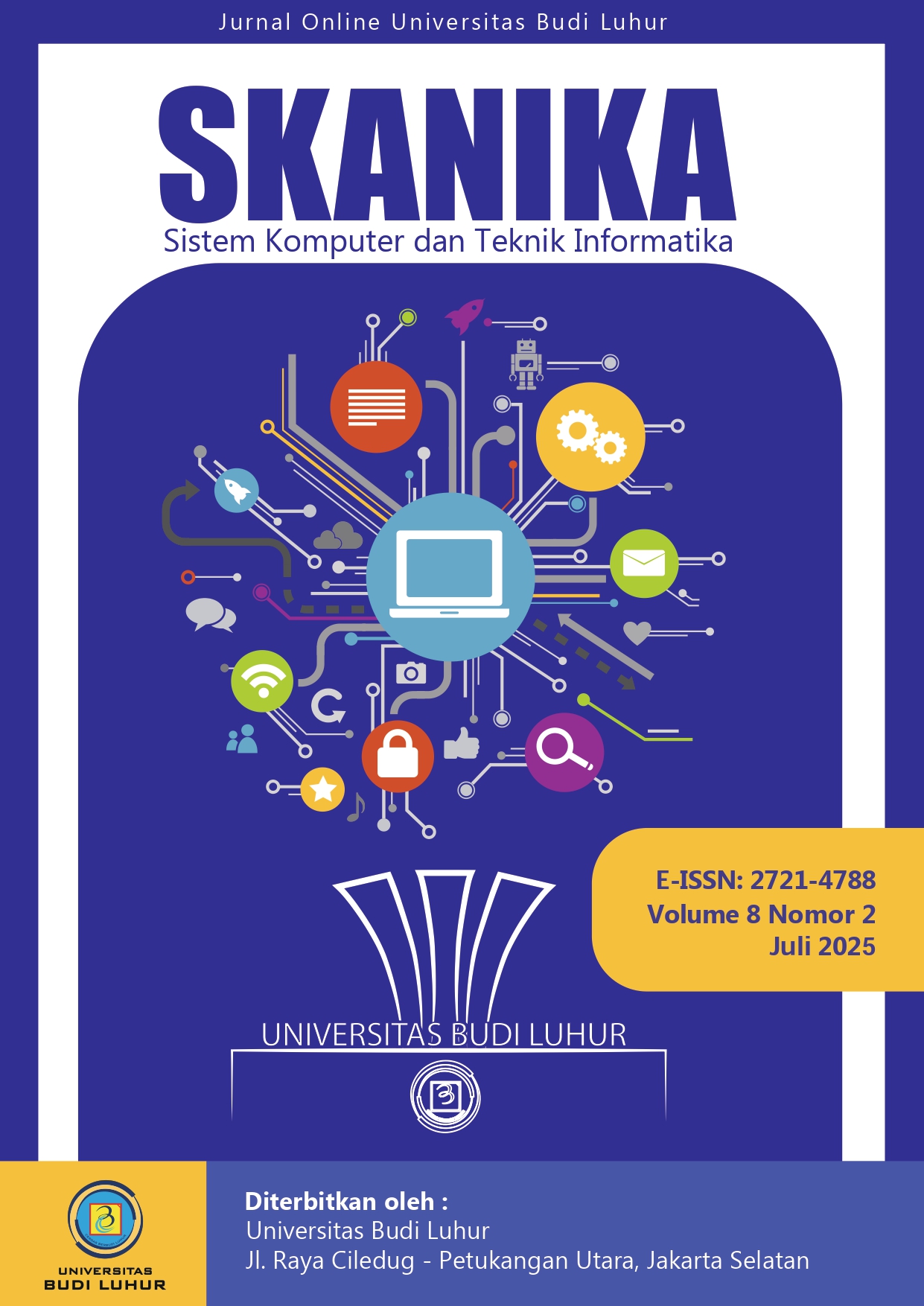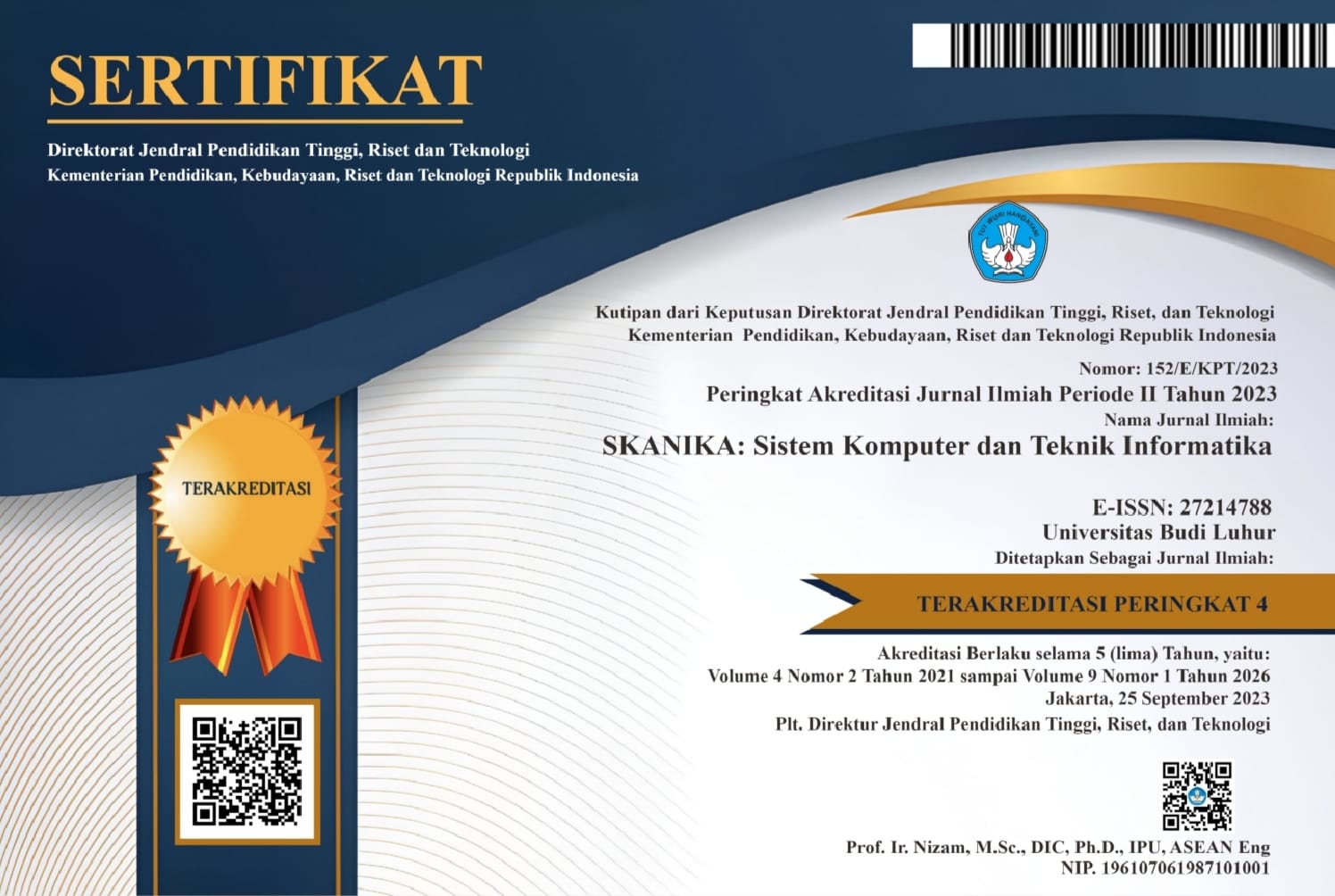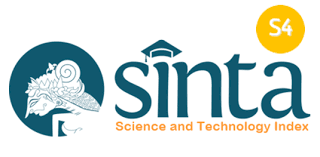PENERAPAN ALGORITMA NAIVE BAYES DAN SVM UNTUK ANALISIS SENTIMEN TERHADAP PENGGUNAAN TRUE WIRELESS STEREO (TWS)
DOI:
https://doi.org/10.36080/skanika.v8i2.3535Keywords:
True Wireless Stereo (TWS), Sentiment Analysis, Naive Bayes, Support Vector Machine, SMOTEAbstract
The use of wireless audio devices such as True Wireless Stereo (TWS) has become increasingly popular among Indonesian society as a solution to the limitations of wired earphones. As TWS usage continues to grow, understanding public sentiment toward these devices becomes essential to support product development and assist consumers in making informed purchasing decisions. This study aims to analyze user sentiment toward TWS on the social media platform X using the Naive Bayes and Support Vector Machine (SVM) algorithms. To improve classification performance, the Synthetic Minority Oversampling Technique (SMOTE) is applied to handle imbalanced data, while Particle Swarm Optimization (PSO) is used to optimize the model. The results show that the SVM algorithm outperforms Naive Bayes, achieving an accuracy of 80.46% and an AUC score of 0.854, with more balanced precision and recall values across both classes. Meanwhile, Naive Bayes demonstrated strength in detecting negative sentiment but with a lower accuracy of 78.00% and an AUC of 0.780
Downloads
References
[1] I. M. Ozifai, K. Fikri, and H. T. Hinggo, “Pengaruh Kualitas Produk Dan Harga Terhadap Keputusan Pembelian TWS Merek Xiaomi(Studi Kasus Masyarakat di Kota Pekanbaru),” Jurnal Ilmiah Mahasiswa Merdeka EMBA, vol. 3 No.2, no. 2, pp. 820–837, 2024.
[2] Ginabila and A. Fauzi, “Analisis Sentimen Terhadap Pemutar Musik Online Spotify Dengan Algoritma Naive Bayes dan Support Vector Machine,” Jurnal Ilmiah ILKOMINFO, vol. 6 No.2, pp. 111–496222, 2023, doi: https://doi.org/10.47324/ilkominfo.v6i2.180.
[3] I. S. K. Idris, Y. A. Mustofa, and I. A. Salihi, “Analisis Sentimen Terhadap Penggunaan Aplikasi Shopee Mengunakan Algoritma Support Vector Machine (SVM),” Jambura Journal of Electrical and Electronics Engineering, vol. 5, no.1, pp. 32–35, 2023, doi: https://doi.org/10.37905/jjeee.v5i1.16830.
[4] M. I. Fikri, T. S. Sabrila, and Y. Azhar, “Perbandingan Metode Naïve Bayes dan Support Vector Machine pada Analisis Sentimen Twitter,” SMATIKA, vol. 10, No.2, pp. 71–76, 2020, doi: http://dx.doi.org/10.32664/smatika.v10i02.455.
[5] A. Karimah, G. Dwilestari, and Mulyawan, “Analisis Sentimen Komentar Video Mobil Listrik di Platform Youtube dengan Metode Naive Bayes,” JATI (Jurnal Mahasiswa Teknik Informatika), vol. 8 No.1, pp. 767–773, 2024, doi: https://doi.org/10.36040/jati.v8i1.8373.
[6] S. Alfaris and Kusnawi, “Komparasi Metode KNN dan Naive Bayes Terhadap Analisis Sentimen Pengguna Aplikasi Shopee,” Indonesian Journal of Computer Science, vol. 12, pp. 2023–2766, 2023, doi: https://doi.org/10.33022/ijcs.v12i5.3304.
[7] N. Sepriadi, E. Budianita, M. Fikry, and Pizaini, “Analisis Sentimen Review Aplikasi MyPertamina menggunakan Word Embedding Fasttext dan Algoritma K-Nearest Neighbor,” INFORMASI (Jurnal Informatika dan Sistem Informasi), vol. 15, no. 1, pp. 91–109, 2023, doi: https://doi.org/10.37424/informasi.v15i1.222.
[8] F. M. Fadillah, Y. Cahyana, and A. Fauzi, “Analisis Sentimen Masyarakat Terhadap Pembatasan BBM Pertalite Menggunakan Random Forest dan K-Nearest Neighbor,” Bulletin Of Computer Science Research, vol. 5, pp. 340–352, 2025, doi: https://doi.org/10.47065/bulletincsr.v5i4.547.
[9] W. Ningsih, B. Alfianda, R. Rahmaddeni, and D. Wulandari, “Perbandingan Algoritma SVM dan Naïve Bayes dalam Analisis Sentimen Twitter pada Penggunaan Mobil Listrik di Indonesia,” MALCOM: Indonesian Journal of Machine Learning and Computer Science, vol. 4, pp. 556–562, 2024, doi: https://doi.org/10.57152/malcom.v4i2.1253.
[10] S. Bumbungan, K. Kusrini, and Kusnawi, “Penerapan Particle Swarm Optimization (PSO) dalam Pemilihan Parameter Secara Otomatis pada Support Vector Machine (SVM) untuk Prediksi Kelulusan Mahasiswa Politeknik Amamapare Timika,” Jurnal Teknik AMATA, vol. 04, no.1, 2023, doi: https://doi.org/10.55334/jtam.v4i1.77.
[11] V. Rupapara, F. Rustam, H. F. Shahzad, A. Mehmood, I. Ashraf, and G. S. Choi, “Impact of SMOTE on Imbalanced Text Features for Toxic Comments Classification Using RVVC Model,” IEEE Access, vol. 9, pp. 78621–78634, 2021, doi: 10.1109/ACCESS.2021.3083638.
[12] Asian Law Students’ Association, ALSA Legal Writing Guidebook: Advanced Guide to Level Up Legal Writing. Jakarta, 2024.
[13] A. N. Ramadani, K. C. Kirana, U. Astuti, and A. Marini, “Pengaruh Penggunaan Media Pembelajaran Terhadap Dunia Pendidikan (Studi Literatur),” JPDSH: Jurnal Pendidikan Dasar Dan Sosial Humaniora, vol. 2 No.6, no. 6, pp. 749–756, 2023, https://doi.org/10.53625/jpdsh.v2i6.5432.
[14] A. Pratama and M. Rosyda, “Analisis Sentimen dalam Aplikasi X terhadap Pengungsi Rohingya dengan LSTM,” SKANIKA: Sistem Komputer dan Teknik Informatika, vol. 8, no. 1, pp. 95–105, 2025, doi: https://doi.org/10.36080/skanika.v8i1.3329.
[15] R. Gelar Guntara, “Pemanfaatan Google Colab Untuk Aplikasi Pendeteksian Masker Wajah Menggunakan Algoritma Deep Learning YOLOv7,” Jurnal Teknologi Dan Sistem Informasi Bisnis, vol. 5, no. 1, pp. 55–60, 2023, doi: https://doi.org/10.47233/jteksis.v5i1.750.
[16] A. P. Joshi and B. V. Patel, “Data Preprocessing: The Techniques for Preparing Clean and Quality Data for Data Analytics Process,” Oriental Journal of Computer Science and Technology, vol. 13, pp. 78–81, 2021, doi: http://dx.doi.org/10.13005/ojcst13.0203.03.
[17] L. B. A. Prasetya, “Clustering Dalam Menentukan Tindak Lanjut HasilAnnual Check Mental Health Dengan Algoritma K-Means,” Computer Based Information System Journal, vol. 13, no. 1, pp. 55-61, 2025, doi: https://doi.org/10.33884/cbis.v13i1.9564.
[18] N. Khoirunnisaa, et al., “Klasifikasi Teks Ulasan Aplikasi Netflix Pada Google Play Store Menggunakan Algoritma Naive Bayes dan SVM,” SKANIKA: Sistem Komputer dan Teknik Informatika, vol. 7 No.1, pp. 64–73, 2024, https://doi.org/10.36080/skanika.v7i1.3138.
Downloads
Published
How to Cite
Issue
Section
License
Copyright (c) 2025 Risca Lusiana Pratiwi, Zulia Imami Alfianti, Ahmad Fauzi, Ginabila Ginabila

This work is licensed under a Creative Commons Attribution-ShareAlike 4.0 International License.
CC BY-SA 4.0
Creative Commons Attribution-ShareAlike 4.0 International
This license requires that reusers give credit to the creator. It allows reusers to distribute, remix, adapt, and build upon the material in any medium or format, even for commercial purposes. If others remix, adapt, or build upon the material, they must license the modified material under identical terms.
BY: Credit must be given to you, the creator.
SA: Adaptations must be shared under the same terms.ng












